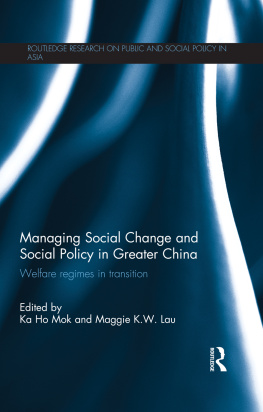Burnes - Managing change
Here you can read online Burnes - Managing change full text of the book (entire story) in english for free. Download pdf and epub, get meaning, cover and reviews about this ebook. year: 2017, publisher: Pearson, genre: Politics. Description of the work, (preface) as well as reviews are available. Best literature library LitArk.com created for fans of good reading and offers a wide selection of genres:
Romance novel
Science fiction
Adventure
Detective
Science
History
Home and family
Prose
Art
Politics
Computer
Non-fiction
Religion
Business
Children
Humor
Choose a favorite category and find really read worthwhile books. Enjoy immersion in the world of imagination, feel the emotions of the characters or learn something new for yourself, make an fascinating discovery.
Managing change: summary, description and annotation
We offer to read an annotation, description, summary or preface (depends on what the author of the book "Managing change" wrote himself). If you haven't found the necessary information about the book — write in the comments, we will try to find it.
Burnes: author's other books
Who wrote Managing change? Find out the surname, the name of the author of the book and a list of all author's works by series.
Managing change — read online for free the complete book (whole text) full work
Below is the text of the book, divided by pages. System saving the place of the last page read, allows you to conveniently read the book "Managing change" online for free, without having to search again every time where you left off. Put a bookmark, and you can go to the page where you finished reading at any time.
Font size:
Interval:
Bookmark:

To Sue, Duncan and Stuart
There is nothing so practical as a good theory.
Kurt Lewin
All models are wrong, some models are useful.
George Box
In 25 years since the first edition of this text was published, the world has changed considerably. In 1992, the VCR still ruled supreme, the DVD recorder was merely an interesting concept and the idea of streaming films and TV programmes over the internet had not even been thought of. Indeed, the internet was in its infancy and there was no effective way of undertaking a web search, even if there was anything worth searching for; Google was not launched until 1998. The only way to obtain digital music was in the form of a CD. Steve Jobs would not launch the iPod and iTunes until 2001. The first iPhone did not appear until 2007. Needless to say, there were no social media MySpace was launched in 2002, LinkedIn followed in 2003, and then Facebook in 2004, with Twitter making its appearance in 2006. Even the ubiquitous Amazon did not make its first tentative appearance until 1994. Therefore, much of what we now rely on for work and play, and which we take for granted, did not exist in 1992.
At a macro level, there have been equally big changes since 1992. Three very obvious examples of this are the emergence of China as an economic power to rival the United States (Bajpai, 2016); the advent of an integrated global economy that is facilitating not only the free movement of goods, services, finance and people, but also local markets becoming global markets and previously protected markets and industries being opened up to fierce competition (Burnes, 2009a; Rodrik, 2012; Stiglitz, 2013); and last though not least, the recognition that climate change is now the biggest threat facing the planet and that creating a sustainable future will require significant action by governments, consumers and most of all organisations (Benn et al , 2014; Bonini and Bov, 2014).
The year after the first edition of this text was published, Hammer and Champy (1993: 23) declared that change has become both pervasive and persistent. It is normality. Many people thought this was something of an exaggeration, but now most people would see this as a statement of the blindingly obvious. Certainly, when in 2008, McKinsey & Companys (2008: 1) Global Survey of organisational transformation concluded that organizations need to change constantly, no one blinked an eye. Likewise, McKinseys 2015 Global Survey (Bughin et al , 2015), which concluded that to stay competitive organisations would need continuous experimentation and bigger changes faster, seemed merely to be confirming what the majority of managers believe: that the magnitude, speed, impact and especially unpredictability of change are greater than ever before.
Undoubtedly, the period since the publication of the first edition of this text has seen organisations having to cope with massive swings in their fortunes. The period began with (Bryce, 2002; Cassidy, 2002; Cellan-Jones, 2003; Kaplan, 2002; Sirower, 2003). This period also saw the bankruptcy of Enron and the exposure of fraud on a massive scale by its leaders yet another reminder of the fragility and unpredictability of organisational life. It was the spectacular collapse of companies such as Enron, which had grown rapidly and collapsed equally rapidly, that led the American investment guru Warren Buffett to make his now famous remark: Its only when the tide goes out that you see who has been swimming with their trunks off.
Nevertheless, after the first two years of the new millennium, the world economy began to recover. Then came the 2008 credit crunch, which began with the sub-prime scandal in the United States and quickly spread across the world (Clark, 2008; Doran, 2008; Hutton, 2008a). Not only did this lead to the worst economic crisis since the Great Depression of the 1930s, but it also appeared to challenge decades of economic orthodoxy about the benefits of free-market competition (Hutton, 2008b). Since then, however, the financial sector seems to have reverted to type by fighting regulations designed to prevent a repeat of the 2008 credit crunch while at the same time awarding ever-bigger bonuses (Alloway, 2013; Guthrie, 2013). Then in 2016, just when many organisations thought they could look forward to a period of relative stability, along came Brexit the UK vote to leave the EU which has left organisations and markets across the globe struggling to understand and adjust to what Brexit might mean for them (Campbell and Inagaki, 2016; Hartford, 2016). Nevertheless, probably the most significant, disruptive and, to most people, welcome recent event was the outcome of the December 2015 Paris UN Conference on Climate Change, which signalled that sustainability had reached the top of the political agenda (Hasina, 2016). The consequences for organisations of pursuing sustainability will be significant, far-reaching and, in many cases, unpredictable. Yet, as post-Paris developments such as the banning of ozone-depleting coolants and the reduction of carbon emissions by airlines have shown, some organisations appear to be making strenuous efforts to achieve the UNs sustainability targets, although other industries, such as shipping, seem more reluctant (Harvey, 2016; Miliman, 2016; Vidal, 2016).
As can be seen, even in the relatively short period since the publication of the first edition of this text, organisations have had to cope with many significant, very different and often contradictory challenges. These range from globalisation, sustainability, growth, mergers and acquisitions, and the emergence of new technologies and new competitors, to falling markets, depressed economies, de-mergers and consolidations, and the collapse of some customers, suppliers, competitors and even the financial institutions which lend them money. It is the experience of organisations struggling to cope with events such as these, year in and year out, that underlies McKinsey & Companys claim that organisations need bigger changes faster (Bughin et al , 2015). Yet McKinsey (2008) also found that only a third of organisations managed change successfully.
This brings us to the purpose of this text Managing Change . Although organisational change would not be considered particularly important if products and markets were stable and organisational change was rare, it would be considered even less of an issue if it were easily managed and success could be guaranteed. Alas, it is not just McKinsey which has found substantial evidence that managing change successfully is extremely difficult. Over the years, there has been a continuous stream of examples of change projects that have gone wrong, some disastrously so ( see Brindle, 1998a; Burnes and Weekes, 1989; Bywater PLC, 1997; Chancellor, 2015; Chatterjee, 2007; Chua and Lam, 2005; Cummings and Worley, 1997; Gilbert et al , 2014; Howarth, 1988; International Project Leadership Academy, 2016; Kanter et al , 1992; Kelly, 1982a, 1982b; Kotter, 1996; Ojiako and Maguire, 2008; Robert Half, 2016; Stace and Dunphy, 1994; Stickland, 1998). Indeed, like McKinsey, two of the most respected commentators in the field of organisational change, Beer and Nohria (2000), claim that nearly two-thirds of all change efforts fail, while other leading management consultancies, such as Bain & Co. (Senturia et al , 2008) and Deloitte (Gilbert et al , 2014), also claim the general failure rate is around 70 per cent.
Although these seem implausibly high rates of failure, studies of particular types of change initiatives appear to reach similar conclusions. For example:
Culture change: A study of major European, Asian and North American companies by Bain & Co. found that the failure rate for culture change initiatives was a shocking 90 per cent (Rogers et al , 2006).
Font size:
Interval:
Bookmark:
Similar books «Managing change»
Look at similar books to Managing change. We have selected literature similar in name and meaning in the hope of providing readers with more options to find new, interesting, not yet read works.
Discussion, reviews of the book Managing change and just readers' own opinions. Leave your comments, write what you think about the work, its meaning or the main characters. Specify what exactly you liked and what you didn't like, and why you think so.







